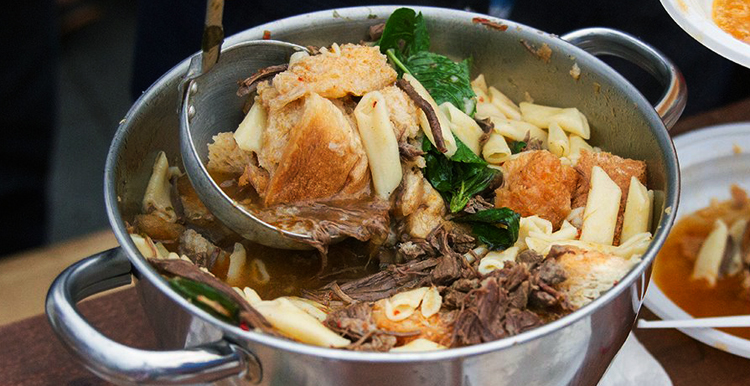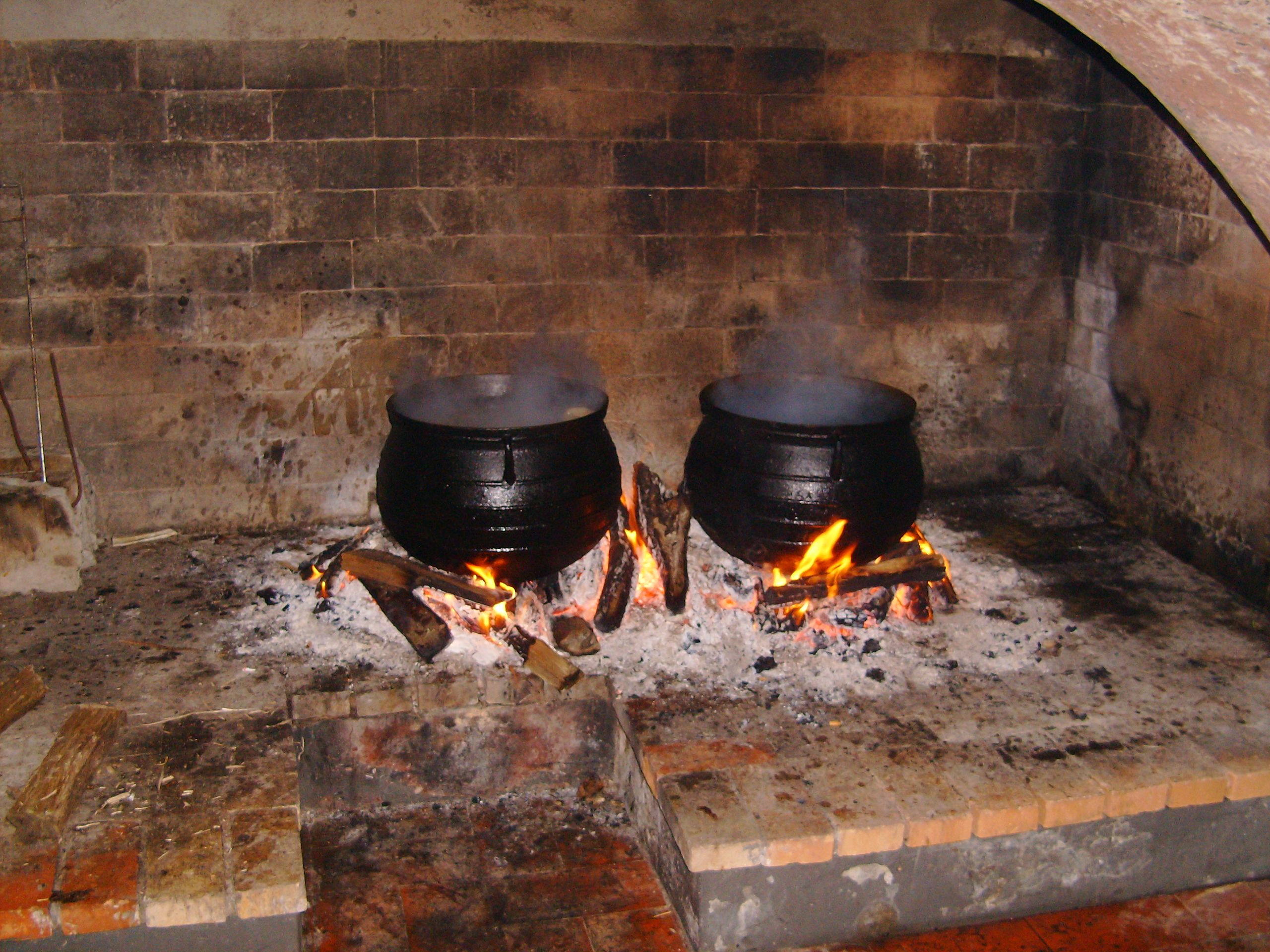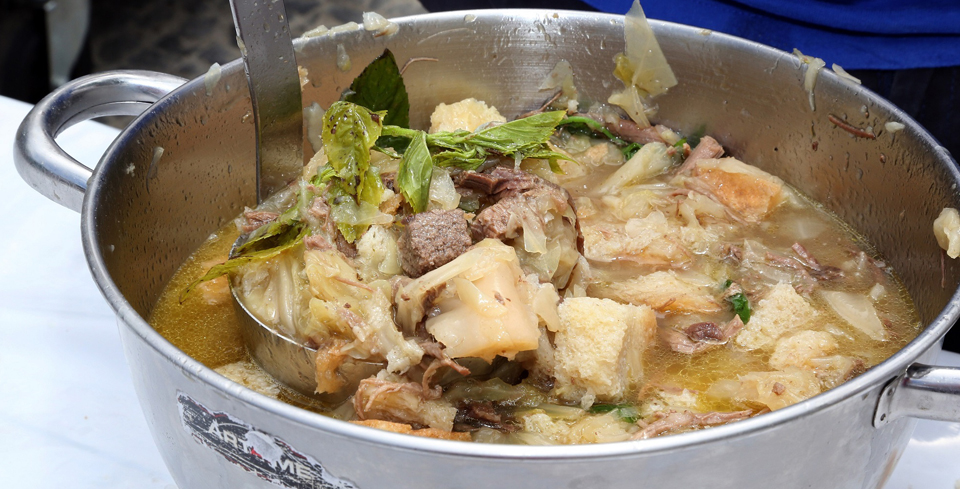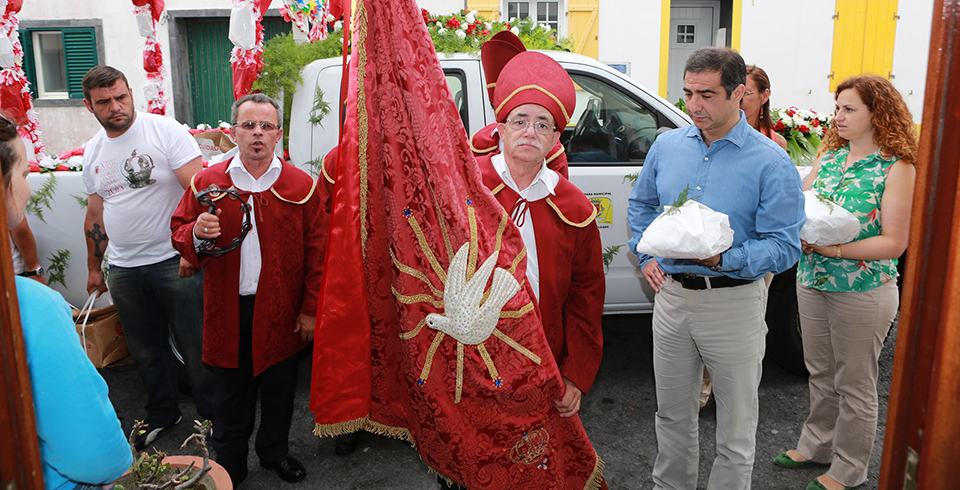Holy Spirit Soup – Azores
Every year, starting in May, all the Azores Islands are filled with a festive atmosphere in celebration of the Divine Holy Spirit. This popular festival, deeply rooted in the Azores, takes place seven weeks after Easter Sunday, on the day the Holy Spirit is believed to have descended upon the twelve apostles, known as Pentecost.
This celebration has a history spanning seven centuries and is commemorated not only in Portugal but also in countries colonized by the Portuguese, such as Brazil and the United States.
On the final day of the festival, the traditional Holy Spirit Soup or Imperial Soup is served. Although the recipe is quite simple and can be made in any home, the taste never compares to the soups served in the Azores Islands.
Every parish has at least one Imperial, a small building with very distinct architecture where the worship activities take place. This architecture varies greatly from island to island, ranging from simple sheds to beautifully adorned chapels topped with the Imperial Crown.
Dozens of volunteers come together and give their best to honor the Divine Holy Spirit. The streets are decorated with lights, greenery, and bunting, and the spirit of community and unity fills the people of the Azores.
Índice de conteúdos [ocultar]
History
The Azorean worship of the Divine Holy Spirit was first recorded in the 14th and 15th centuries. Upon the construction of the Church of the Holy Spirit, Queen Isabel (1271-1336) established a celebration that quickly spread to other Portuguese localities.
During this celebration, the Queen would crown the poorest, and the ceremony was accompanied by a feast. The nobility obtained permission from Queen Isabel to hold this same ceremony on their estates with a replica of the crown, and thus the tradition has been maintained to this day.
The celebration that began in the city of Alenquer is now one of the most traditional in Portugal. Furthermore, this traditional festival has also spread to the new lands discovered by the Portuguese and is still celebrated today in countries like Brazil and the United States.
The Holy Spirit Festival has fostered a sense of community and unity that is very characteristic of Azorean culture. The act of distributing bread during the festival originated with Queen Isabel’s donation of food to the poor, aimed at protecting the inhabitants from natural disasters. On the last day of the celebrations, a Holy Spirit Soup, with meats and vegetables, is served with bread to all who are not part of the local empire / visitors.
The people contribute with great honor and goodwill to the Holy Spirit festivities.
Holy Spirit Festivals / Empires
The most notable features of the Holy Spirit Festivals are the blend of religious and profane manifestations, marked by gastronomy that varies from island to island. In fact, within the same island, it is common for each locality to have its own particularities.
The festivals take place on Sundays during the seven weeks following Easter and include dances, flower arrangements, and the crowning of a child, who presides over the ceremonies with a scepter and a silver crown. On the last Sunday, Pentecost, there is a grand feast where the Holy Spirit Soup is distributed. In some places, a cord bullfight is also held.
The festivities occur in a small chapel or “Empires,” used to distribute the soup and display the festive emblems (the crown, the plaque, and the scepter).
In Terceira Island alone, there are 58 Empires, painted in very bright colors typical of spring.
Holy Spirit Soups
The popular Holy Spirit soups are also known as “Empire Soups.” While many people claim that these soups are typical of Terceira Island and Faial, they can be found on all the islands, with only variations in the recipes.
At the base of this recipe is dry bread, which is spread with butter and covered with the water in which the meats were cooked. The moment of sharing the soups is always one of the most awaited, showcasing the true spirit of community. Tables are set up for dozens or even hundreds of people to share the main dish, the Holy Spirit Soups.
The festivities are always accompanied by much music, singing, bazaars, and auctions, with the profits going towards the festival.
Holy Spirit Soup from Graciosa Island
In the nine islands of the Azores, the recipe may vary slightly, as do the accompaniments in each parish. The following recipe is from the Graciosa Island and provided by the Portuguese Federation of Gastronomic Brotherhoods.
Ingredients Used
- 2 kg beef;
- 800 grams chicken;
- 1 cinnamon stick;
- 2 onions;
- 3 cloves of garlic;
- 1 medium cabbage;
- 200 grams of curdled beef blood;
- 1 large hard wheat bread;
- 500 grams cooked liver;
- salt;
- 1 tablespoon of lard or butter;
- 1 large bunch of mint;
- 1 ladle of top round sauce;
- 1 tablespoon of chili paste.
Preparation Method
In a cloth or gauze, place the cloves of garlic, quartered onions, chili paste, mint, and the cinnamon stick. The cloth is tied and placed in salted water for the soup. When it boils, add the meat and let it cook.
Once the meats are cooked, add the cabbage and lard, and let it cook a little longer. Separately, cook the liver and blood with water in different containers.
The bread is cut in half horizontally, and then each half is cut into four or five pieces. This bread is placed in a bowl with the crumb facing up and drizzled with a ladle of top round sauce and a sprig of mint. On top, add the cabbage, small slices of liver and blood, and drizzle with a little broth. Cover for a few minutes, then drizzle with the remaining broth.
The soup is covered with a linen cloth and kept warm with blankets for two to three hours. After eating the soup, the meat, chicken, and remaining liver and blood are consumed. After serving the soup, the top round is eaten with sweet bread or table bread, depending on the parish.
The soup is cooked in large cauldrons and served in clay bowls, outdoors.
Video
We also share with you the recipe for the Holy Spirit Soups by Leonor Santos.
Curiosities
During the Holy Spirit festivities, traditional soups, sweet bread, meats, and fragrant wine are served. Other dishes also served include sweet rice, eve cake, night rings, crow’s sighs, and the eve cakes from Pico, varying according to locality.
In addition to the presence of local residents, it is increasingly common to see foreign visitors, making the event more and more tourist-oriented.
Each Empire plans its festivities with its unique characteristics. The Holy Spirit Festivals of Ponta Delgada, for example, feature “the ethnographic parade of all the parishes in the municipality with 26 ox carts, 56 floats, 18 folk groups, three musical ensembles, and two sweet bread vans.”
The many visitors who come to the Azores during the festival season are dazzled by the hospitality of the Azorean people. This practice reflects the humanistic and solidarity values expressed through sharing and socializing among all generations and social classes. Furthermore, the festivities highlight the important religious dimension intertwined with interpersonal relationships between locals and visitors from around the world.
 Quick links and suggestions
Quick links and suggestions
Travel insurance with 15% discount for the Azores or another destination Click here to simulate >
Looking for trips to the Azores? See these promotions >
Rent a car in the Azores? The best rent-a-car >
Activities and Experiences during your stay? Check it out here >
See Whales and Dolphins? Book now online >
Have you had a canceled or delayed flight in the last 3 years? Receive your compensation here >







